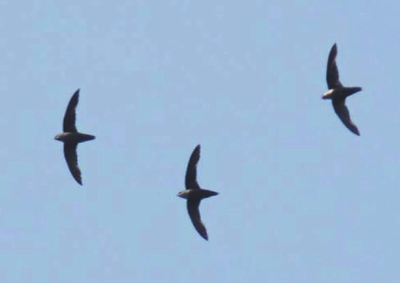
As the Chimney Swifts make a break for the warm weather of South America, we can re-live our own memories of summer weather by checking out the results of the 2020 monitoring season! This was certainly a season to remember, mainly due to the impact that COVID-19 had in Manitoba, across Canada and worldwide. Here in Manitoba, MCSI started off with a backyard Chimney Swift watch. As the government of Manitoba started to open the province back up, we switched to a monitoring season more like the usual.
Another difference this year was the cancellation of the Canada-wide National Roost Monitoring Program in 2020 due to COVID-19. The MCSI Steering Committee replaced these nights with the MCSI Monitoring Nights each Wednesday from late May to late June. We had pretty good weather in that approximately 30-day period, with only one Wednesday being interrupted by a thunderstorm (with people monitoring on the following Thursday instead).
Once the summer nesting season moved into full swing, we had volunteers observing Chimneys Swifts both in the evening (roosting), as well as during the day. We were able to get several confirmed nesting successes this year (always a difficult task with this enigmatic bird), as well as other nesting attempts identified by following swift behaviour and numbers of individuals at the chimneys.
Notable in the fall were several instances of Chimney Swifts hanging around quite late in the season. The roosting chimney in Dauphin did not have a fall count of zero individuals until September 7th (at which point it was -3 degrees). The first zero count of the fall at the St Andrews Lock and Dam Maintenance Compound (our last known site with swifts in Manitoba) was September 12th. The swifts had persisted through a patch of cold and windy weather, before heading off to warmer climates.
Overall, we had monitors out in 25 communities across Manitoba, watching a total of 185 sites (21 new sites this year). Some of these sites had no Chimney Swifts, some sites had Chimney Swifts using chimneys, while others still had Chimney Swifts around but more searching is required to find where in the neighbourhood they are nesting/ roosting.

As always, the MCSI Roost and Nest Site data base is available on the “Monitoring Results” page of the website. This document summarizes the high counts of Chimneys Swifts at sites, if a site was used for nesting or roosting, and successes/ failures of nest (if known).
The MCSI Monitoring Nights results are also available on the “Monitoring Results” page of the website. This table gives a snap-shot into Chimney Swift numbers at each site over an approximately 30-day period.
–Amanda Shave
